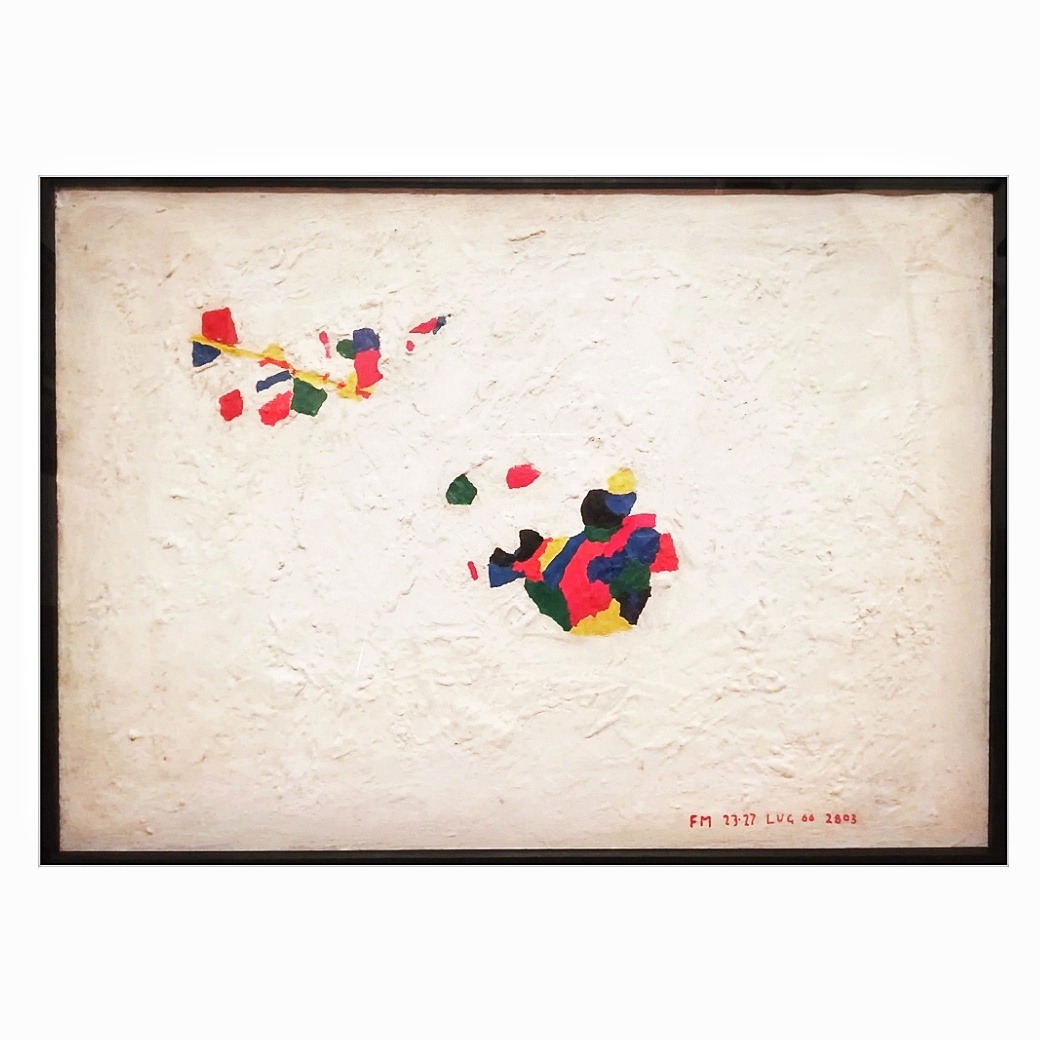- Titolo#2803
- Autore Fernando Melani
- Anno 1966
- Classificazione Painting
- Dimensioni Height: 75 cm Width: 55 cm
- Materiale Oil and kaolin
Descrizione
"Besides the components of classical Abstract Art, Melani also certainly shared the conscious
break with a figurative past, the rudiments of a Post-Cubist simplification, the Marxist faith and
an idea of painting set in a political and social vision; he must have immediately established a
relationship of mutual esteem with some of the adherents of Concrete Art from MAC [...] But, having absorbed the heights of abstraction achieved by Kandinsky and Mondrian and acquired an awareness that his painting possessed a spatial autonomy, Melani ended by rejecting a rigorous geometric and Euclidean layout and instead creating paintings in which the background and every single structure mutually determine each other by virtue of a sensitive, matter-based and organic element – at times even with the inclusion of sand or gravel in the pigment or in the work – that endlessly creates and renews the spatial invention, even including the distortion caused by the effects of time on the materials he used as an operative factor.
Between 1953 and 1964, in an intense theoretical effort, Melani clarified his field of action, defining the work of art as a place of experience, as a means to achieve an understanding of the quantum-energy universe of which – according to what had been demonstrated by the physics theories of the time – everything is part. [...] The almost imperceptible space between these
fragments, when it is made visible, throws light on the artist’s exploration of the concept of “discontinuous”: namely, for Melani, the “realest” and most concrete of anything that he can imagine compared to an idea of the realism of matter. In 1956, reaffirming the autonomy of his creative process, Melani wrote:
“The artist’s sincere participation in a political idea may establish a temporary, favourable situation of renewal. Positive results may be obtained, representing, illustrating content inspired from the idea that has been embraced. Recent experiments have shown, with their related rather unconvincing results, that just the political idea – even if it was historically correct – is not enough to entirely uphold the complex painterly structure." - Annamaria Iacuzzi, "Sorprese fuori rotta: dal Realismo all’Arte Ambientale a Pistoia"
Bibliografia
IACUZZI, Annamaria, "Sorprese fuori rotta: dal Realismo all’Arte Ambientale a Pistoia", p. 45-48
© the author
All material, images, drawings, software, distinctive trademarks contained in this site are protected by Italian Laws and by International Treaties regarding copyrights and may not be reproduced, distributed, displayed or published without permission. For more details see Terms & Conditions.
All material, images, drawings, software, distinctive trademarks contained in this site are protected by Italian Laws and by International Treaties regarding copyrights and may not be reproduced, distributed, displayed or published without permission. For more details see Terms & Conditions.


